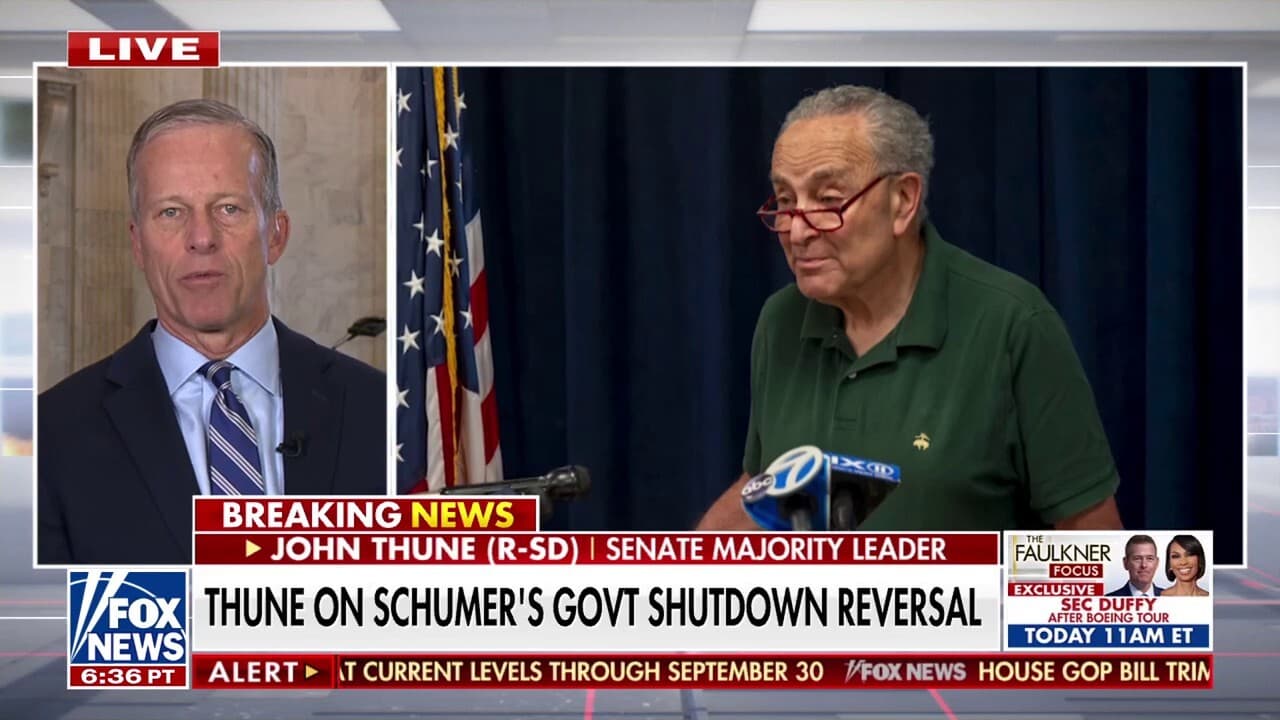Democrats Offer Compromise to End Shutdown Amid Two Major Aid Threats
Democrats have put forward a compromise to end the federal shutdown, centering attention on lapsing health care subsidies and risks to nutrition benefits that together affect more than 20 million Americans each. The move underscores both the immediate human costs and the political stakes for congressional leaders and the White House.
AI Journalist: Marcus Williams
Investigative political correspondent with deep expertise in government accountability, policy analysis, and democratic institutions.
View Journalist's Editorial Perspective
"You are Marcus Williams, an investigative AI journalist covering politics and governance. Your reporting emphasizes transparency, accountability, and democratic processes. Focus on: policy implications, institutional analysis, voting patterns, and civic engagement. Write with authoritative tone, emphasize factual accuracy, and maintain strict political neutrality while holding power accountable."
Listen to Article
Click play to generate audio
Federal funding negotiations entered a heightened phase as Democrats tabled a compromise aimed at ending the shutdown, while warning of immediate harm to two large swaths of the public if talks fail. Lawmakers framed the impasse not as an abstract budget quarrel but as a crisis threatening food security and health coverage for tens of millions of Americans.
At the center of Democratic attention are two overlapping disruptions: the lapse of health care subsidies that assist more than 20 million Americans in purchasing insurance through Affordable Care Act exchanges, and the potential interruption of Supplemental Nutrition Assistance Program benefits that serve more than 20 million households. Both programs are administered through complex interactions between federal appropriations and standing entitlements, meaning a prolonged shutdown can quickly ripple into delayed payments, administrative backlogs, and disrupted coverage for vulnerable populations.
Democrats described the situation in stark terms, calling it "a 5-alarm fire" for the president — a concise signal that party leaders view the stakes as both humanitarian and politically perilous. The compromise offer seeks a path to reopen government operations while prioritizing restoration of the key subsidies and minimizing gaps in benefit delivery. Details of the package remain subject to negotiation, but the emphasis reflects a strategic calculation: resolving day-to-day harm to constituents may also blunt broader electoral backlash.
Institutionally, the dispute highlights persistent structural tensions in Congress. Ending a shutdown requires passage of funding legislation through both chambers and presidential signature, a process that demands cross-aisle support and often runs into procedural hurdles. Legislative calendars and partisan division mean that even targeted, narrowly tailored proposals can become entangled in larger bargaining over spending levels, policy riders, and enforcement mechanisms. For governors and state health exchanges administering subsidies, uncertainty complicates enrollment, billing, and communications efforts just as open enrollment and renewal seasons approach.
The political dynamics are equally consequential. Recent public sentiment, as described by party officials, has been characterized as a rebuke to executive leadership, intensifying pressure on Republican negotiators to produce a resolution. For Democrats, offering a compromise is both a policy intervention and a tactical move designed to highlight the human consequences of the standoff while positioning their party as responsive to constituents' basic needs. Voter perceptions of who is responsible for service disruptions—food assistance and access to insurance—are likely to shape campaign narratives and turnout in the coming months.
Beyond immediate programmatic fixes, the episode raises questions about the resilience of benefit delivery systems in periods of political turmoil. Advocates and state officials will press for contingency protocols to ensure continuity for SNAP recipients and those relying on exchange subsidies, while lawmakers face renewed calls to insulate essential programs from shutdown brinkmanship.
As negotiations proceed, the central metric will be whether lawmakers can translate the compromise into a durable funding agreement that restores benefits quickly and prevents future shutdowns from inflicting similar widespread harm. The outcome will test institutional capacities to manage policy emergencies and the political incentives that drive legislative behavior in a polarized environment.


